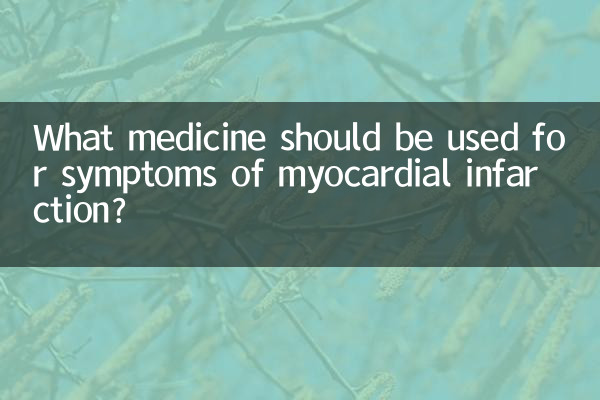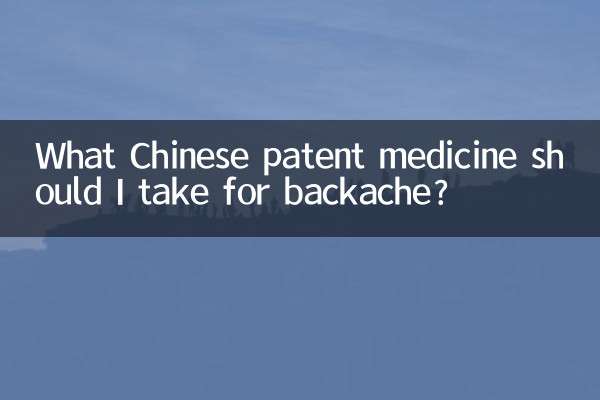What medicine should be used for symptoms of myocardial infarction?
Myocardial infarction (MI) is a life-threatening emergency and it is crucial to recognize early symptoms and take corrective action. This article will combine the hot health topics on the Internet in the past 10 days to sort out the typical symptoms, commonly used drugs and precautions for myocardial infarction, and provide structured data for reference.
1. Common precursor symptoms of myocardial infarction

According to recent hot discussions on medical forums and health science platforms, precursors to myocardial infarction usually present with the following symptoms:
| Symptom type | Specific performance | duration |
|---|---|---|
| Chest discomfort | Squeezing pain and swelling | more than 15 minutes |
| Radiating pain | Left shoulder, back, jaw pain | intermittent or continuous |
| Other symptoms | Cold sweats, nausea, difficulty breathing | Accompanied by chest pain |
2. Emergency medicines for signs of myocardial infarction
According to the first aid guidelines recently issued by tertiary hospitals, the following drugs can be used for emergency treatment of precursors to myocardial infarction:
| Drug name | Mechanism of action | Usage and dosage | Things to note |
|---|---|---|---|
| Nitroglycerin | dilated coronary arteries | 0.5 mg sublingually | People with low blood pressure should use with caution |
| Aspirin | Anti-platelet aggregation | Chew 300mg | Not suitable for those with allergies |
| Suxiao Jiuxin Pill | Improve blood supply to myocardium | Take 10-15 capsules sublingually | You need to lie still after taking the medicine |
3. Necessary measures after taking medication
According to recent statistics released by emergency centers, the following key steps still need to be taken after taking the medication:
| steps | Operation content | time requirement |
|---|---|---|
| 1. Call for help immediately | Dial 120 emergency number | Take medication at the same time |
| 2. Maintain posture | Lying or semi-sitting | Continue until the ambulance arrives |
| 3. Record symptoms | Record the time when symptoms change | Record every 5 minutes |
4. Recent hot discussions
Combined with the hot topics on the Internet in the past 10 days, the following content deserves attention:
1. The incidence of myocardial infarction among young people is increasing: Many media reported that the number of myocardial infarction cases among people aged 30-40 is increasing, which is related to factors such as staying up late and high stress.
2. Misunderstandings in drug use: Some patients take nitroglycerin as a "panacea" for long-term use. Experts emphasize that it is only suitable for first aid.
3. New detection technology: The ECG monitoring function of wearable devices has become a hot topic and can help detect abnormal heart rhythms early.
5. Prevention Suggestions
Based on recently released health guidance, the following precautions are recommended:
1. Regular physical examination: People over 40 years old should have a heart examination every year.
2. Control risk factors: manage the "three highs" of hypertension, hyperglycemia, and hyperlipidemia.
3. Improve your lifestyle: quit smoking, limit alcohol consumption, exercise moderately, and maintain emotional stability.
4. Learn first aid knowledge: Master basic first aid skills such as cardiopulmonary resuscitation.
Important reminder:This article is for reference only. Please follow your doctor’s advice for specific medication. When pre-myocardial infarction symptoms appear, you should call the emergency hotline immediately and do not delay treatment by taking medication on your own.

check the details

check the details